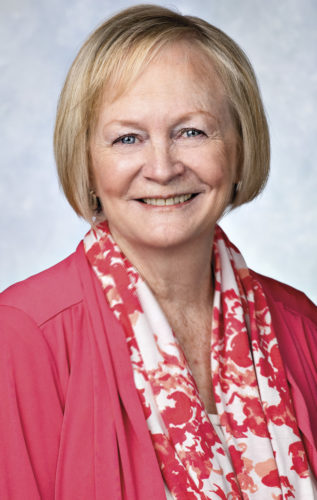Humans have a love-hate relationship with range fires.
While fire rejuvenates and assists nature with plant reproduction, fire doesn’t discriminate between plant species – between cheatgrass seed and sagebrush seed. It doesn’t care. It can also ravage structures and endanger habitat and human lives.
The passion of that relationship is like a pendulum swinging dramatically from one era to the next – indicating an either-or relationship.
Out of the historic 1910 “Big Blowup” fires across Montana, Idaho and Washington (burning three million acres), a policy of total fire suppression evolved.
In the early 1970s, the policy dramatically shifted to “let it burn,” with a resultant price tag in 1985 totaling $239,943,000 when 2,896,147 acres charred.
Over the next 25 years came suburban sprawl, the Yellowstone Fire and an increase in fire intensity. By 2012, fire-suppression cost was $1,902,446,000, and flames burned 9,326,238 acres.
From one extreme to the other, humans have tried to figure out how to co-exist with and yet take advantage of fire.

The rancher
Fire can leave behind waves of grassland, and you might think more grass would always be better. Grass would convert to more animal units (AU), heavier weaning weights and more milk production.
Can you have too much of a good thing? Yes, say ranchers across the West. The hard realities are that once the grass gets too plentiful, it becomes a fire hazard – the tinderbox waiting for the spark.
Mike Guerry, a Roseworth, Idaho, rancher, points out that waves of grassland turned to blackened bare ground doesn’t feed cows.
“The winter permit that our cattle operation has been built around, and that we have had for 30-plus years, burned once in the first 20 years. It now has burned five times in the last 11 years approximately. That has caused us to be off the permit for one to two years each time, making it very difficult to keep our operation viable.”
But grass isn’t the whole story; we can’t talk about rangeland grass unless we also talk about sagebrush – two horns on the same cow.
Fire management is not just about whether cattle and wildlife have grass to graze, it’s also about the plants that grow – or don’t grow – behind a fire-burned range. Sagebrush is one of the plants that does not return following an intense fire. Grass, cheatgrass or other plants quickly out-compete sagebrush for surface water.
Sagebrush supports several wildlife species, including sage grouse. With wildfires burning off the sagebrush, sage grouse are becoming endangered.
Ranchers are convinced there is a way to help the sage grouse, and the ranchers that have sage grouse leks (breeding grounds) on their lands are proud of them and argue this is evidence that they’re doing something right through grazing, which also reduces fuel load.
Yet court judgments and political policies have consistently ruled against rangeland managers and reduced grazing allotments, blaming cattle for the reduction in sage grouse and completely ignoring the role fire has played.
Ranchers argue there are two ways to reduce fine fuels, and the first defense is through grazing. “Ranchers have understood the importance of fine fuel removal and remember when fine fuels were known by a better name: feed.
“I am convinced that the solution to the degradation of sagebrush steppe and the decline in population of all of the wildlife that depends on that habitat lies in the resumption of some greater grazing levels,” says rancher Gus Brackett of Three Creek, Idaho.
Ranchers also propose reducing fine fuels through managed burns, which in turn reduces large wildfires – a win-win, they say.
Guerry says, “We need smaller, mosaic-type burns throughout the area to stimulate new growth of forbs and fine grasses, for both the wildlife and domestic livestock. In my perfect world, we would burn 5 percent of the resource area every year in 500- to 3,000-acre mosaic burns and in 20 years have burned the entire area. At that point, the first areas that had burned would be back to a full canopy of brush and ready to burn again. These type burns provide a smorgasbord of new forbs and grasses for the wildlife while still leaving edge effect for cover.”
The wildlife
Prolific grasslands aren’t just a cattleman’s problem. Burned land does not feed wildlife either and, further, destroys cover from predators. The lack of sagebrush threatens any species dependent upon it for survival – sage grouse, sage sparrow and pygmy rabbits, to name a few.
“In winter, the only thing we really need is sagebrush under all-snow conditions. (Sage grouse) have got to be able to get to sagebrush to get something to eat,” says Jack Connelly, principal wildlife research biologist for the Idaho Department of Fish and Game.
“Things get a lot uglier for grouse and grouse conservation in the spring. Three things grouse need in spring to survive: cover (sagebrush), forbs and grass. These three things provide good survival for grouse. If one component is missing, the system starts to fall apart.”
If grazing permits on public lands are reduced, cattle are sold and ranchers become insolvent, beef prices rise and ungrazed grasses proliferate and ignite astoundingly large, dangerous and destructive wildfires.
Wildfires wipe out sage steppe habitats. Wildlife diminishes due to the loss of breeding ground cover and feed. When wildlife is endangered, it becomes listed.
In a press release dated March 25, 2013, the U.S. Fish and Wildlife Service stated, “A large ground-dwelling bird, the decline of the sage grouse population has been a result of primary threats such as habitat loss and fragmentation due to wildfire, energy development and invasive plant species.
“The birds currently occupy approximately 56 percent of their historical range. Based on a 12-month status review pursuant to the Endangered Species Act, the U.S. Fish and Wildlife Service determined that the listing of the species was warranted but precluded by higher priorities.” The determination is scheduled for review in 2015.
The controversy
The results of a rangeland burn that produces overabundant grass does not benefit cattle or wildlife. On this point, there is no argument. The only continuing argument seems to be who to blame for it.
Grazing, wildlife and ecology interests have been controversial for years with competing interests and philosophies. The sides are so far apart neither expects to convert the other. There are basically two arguments.
Ranchers say grazing doesn’t hurt and even helps sage grouse by managing grass volume and reducing dangerous fire burns, thus preserving sagebrush-steppe cover.
Ranchers argue a direct relationship between reduced grazing and the increase and intensity of wildfires. Brackett says, “While burned rangeland means no grass at all for cattle for perhaps one, two or even three years while vegetation replenishes, it doesn’t bode well for wildlife species, either ... I contend it is ecologically improbable to expect anything but a grassland in the absence of grazing. Instead of looking at livestock as the problem, perhaps we need to view grazing as the solution.”
Conservationists would abolish all grazing: “The time has come to end public lands ranching” (from the Western Watersheds website, Aug. 1, 2013).
Connelly explains the problem with the conservationist stance, “... Western Watersheds says grazing is bad every day, everywhere, all the time, 365 days a year. And they successfully prosecute that argument in court, and they do it without any data – there is no scientific data to support that argument.”
The mediator
That’s where the biologist comes in. It’s the biologist’s job to provide scientific data. Yet the wildlife biologist walks a fine line. While conservationists and ranchers have the luxury of being passionate, philosophical and political, the wildlife biologist does not.
“My job isn’t to prove or disprove anything. My job is to objectively collect the data and tell you biologically what it means. Then it’s the politician’s job to implement policy based on the data,” Connelly says.
“Although livestock grazing is often identified as a major problem for sage grouse, the truth is we lack experimental or even good observational data describing the relationship of grazing to sage grouse or fuel loads in sage grouse habitat. A research group in Idaho that includes scientists from the University of Idaho and Idaho Department of Fish and Game, managers from state and federal agencies and some interested ranchers and conservationists hope to change that.”
Connelly is proposing a study to collect this observational data through a collaborative, interagency effort to understand how stock grazing, sage-steppe maintenance and sage grouse relate.
The researchers will identify nine lek sites and spend three years collecting pre-treatment data. Phase two includes spending the following seven years manipulating stocking rates at the sites to see how cattle and sage grouse interact.
While the study is in the formulation phase – determining where, when and what elements to bring into play and finalizing funding – ranchers are asking for a fuel-load component in the study, arguing that without incorporating this element the study is useless.
To date, key elements of the study have been identified and key players are in place. The 2014 grazing season will hopefully be the first data-collecting period.
This doesn’t mean the controversy is over – it just means the pendulum finally has a reason to swing toward middle ground. Hopefully it will do so before millions more acres burn. ![]()
For more on this article read Combating range fires - more boots on the ground.
PHOTOS
PHOTO 1: Chris Anthony, with the U.S. Bureau of Land Management, starts a backburn on the 2,000-acre Bray Lake Fire in July 2013 north of Bliss, Idaho.
PHOTO 2: A backhoe is used to bury some of the 100 cattle one operator lost during the McCan Fire in August 2013 northwest of Fairfield, Idaho. Photos courtesy of Ashley Smith, MAGICVALLEY.com









